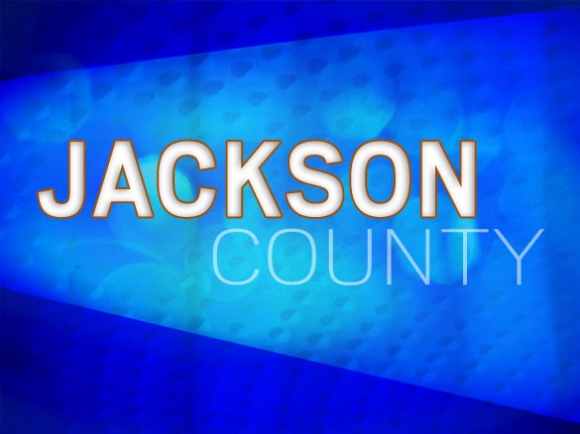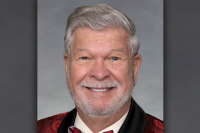Jackson County Schools plan for reopening

This week the debate has raged over whether — and how — to reopen schools next month. President Donald Trump has demanded that schools reopen, and yet some of the largest districts in the country, including Los Angeles and San Diego, have announced they will remain fully remote this fall, following a surge of cases and a reversal of reopening efforts in California.
At a special called meeting July 7, Jackson County Public Schools administration presented the school board with plans for several possible reopening scenarios.
JCPS created two central committees to plan for returning to schools next month, whatever that may look like. The Environment and Safety Committee was responsible for cleaning and sanitation, health and safety, child nutrition and transportation. The Remote Learning Committee was responsible for curriculum and instruction, instructional technology and professional development, human resources, data collection, special populations and student services.
Retiring Superintendent Dr. Kim Elliott addressed the meeting first, expressing how proud she was of JCPS administration and staff and her gratitude for how hard they have worked at planning for reopening. She then turned the meeting over to Assistant Superintendent Jacob Buchanan.
“There is a great deal of concern in our community, and rightfully so, but the first message I would give is that Jackson County and Jackson County Public Schools have a long track record of coming together to take care of our kids. We fully understand the magnitude of reopening and what it means for our community, what it means for family, what it means for our staff and most importantly, what it means for our children,” he said.
According to Buchanan, the planning process included parents, staff, community members, experts from the health department, representatives from Western Carolina University and private practitioners in the medical field.
Related Items
Health and safety
The plan for cleaning and sanitation includes the kind of social distancing now familiar in daily life. Plexiglass barriers will be installed in reception and waiting areas, and signage and floor stickers will indicate flow patterns to maximize social distancing. All middle and high school students and staff will be required to wear personal protection equipment provided by the school. K-5 students will be required to wear masks as much as possible and always outside of classrooms. Masks were purchased for the school system with the help of Dogwood Health Trust.
Hand sanitizer and/or portable hand sinks will be placed in every classroom and other common areas and touch free bottle fillers will be available in place of water fountains. Students will be encouraged to bring their own water bottle to school, but reusable cups will be provided to each student that can be washed in the lunchroom dishwashers.
The committee created a detailed plan for daily, and more frequent, sanitation with checklists for added assurance and accountability.
Students will remain in the same classroom everyday whenever possible, with teachers coming into the classroom to teach different subjects. Lunch and breakfast will also be taken in the classroom.
Buchanan assured the board that with all the changes and new rules, staff would be trained on all protocols prior to reopening, students and parents would be educated through multiple avenues prior to reopening, and students would be trained on procedures during the first few days at school.
If a student or staff has been exposed to a positive case, they will not be permitted to come to school for 14 days, if a student tests positive for COVID-19, they will not be permitted in school for 10 days, and if a student has had symptoms, they are not permitted in school until 10 days after their first symptom. In order for this plan to work, attendance policies will have to be altered or suspended.
Transportation
“Reopening plans, especially on the environment and logistical end, will tell you that one of the biggest challenges school districts are facing is transportation,” said Buchanan.
There were three options presented to the board for transportation. Under a “total social distance” model each bus could fit seven students, the “every other seat” model would allow for 11 students per bus and the “one student per seat” model would allow for 22 per bus (this model includes allowing students from the same household to share a seat). Any of these plans would greatly increase route numbers. Using the “total social distance” model, some routes that usually take one run would now take 15. Even the model that allows for one student per seat would triple or quadruple the number of usual bus routes.
Regardless of what plan is used, busses would have to be sanitized after each route, and another adult in addition to the bus driver will likely be placed on each bus to take temperatures before students get on the bus, and ensure compliance with social distancing while the bus is moving.
The least expensive plan, placing one child per seat will increase the budget by $147,000 per month. According to research by JCPS, ridership will be down 15 percent from normal years.
Remote learning
According to JCPS, each school district is required to submit a Remote Instruction Plan to the Department of Public Instruction by July 20.
Chief Academic Office Angie Dills presented the Remote Learning Plan to the board. The plan centers around regular and clear contact with students and parents about learning objectives. JCPS will be using a paid and expanded version of the Remind app to help students, teachers and parents stay connected. The plan is designed for five remote learning days per week, in case schools are expected to be fully remote again this fall. If school is fully or partially remote, there will be remote learning training days for students at the beginning of the school year.
An important aspect of the plan is feedback and engagement between teacher and administrators. Instructional videos will be used as an important way to not only relate information to students, but for teachers to observe themselves and understand what they, and their peers can do to better relay information and material.
“When we are at our best as a school system and as a community, it’s when parents and staff work together and communicate together and we’re all on the same page” said Buchanan.
Administration made clear that there had to be communication about grades and academic expectations. Dills said that many teachers reported students tuning out at the end of last school year once they found out that their grades would not change depending on work and engagement.
In addition to regular academic expectations, JCPS has outlined specific plans for special population students.
Reopening options
According to the North Carolina Department of Health and Human Services, there are three options for reopening schools this year. Under Plan A, schools reopen fully and there is minimal social distancing. This plan will be possible if COVID-19 metrics stabilize or improve. Under Plan B, school would reopen with social distancing and reduced capacity. This would be the plan if COVID-19 cases continue to worsen. Plan C would mean complete remote learning and will take place if COVID-19 metrics worsen significantly.









